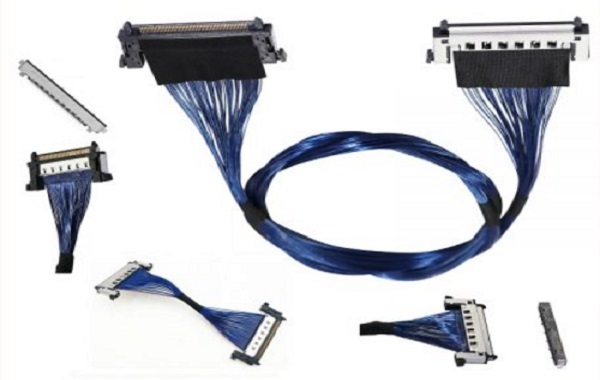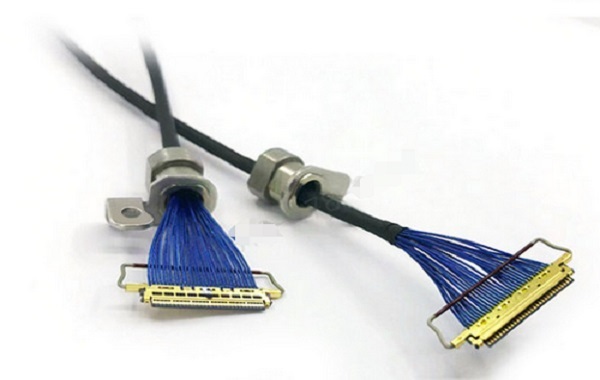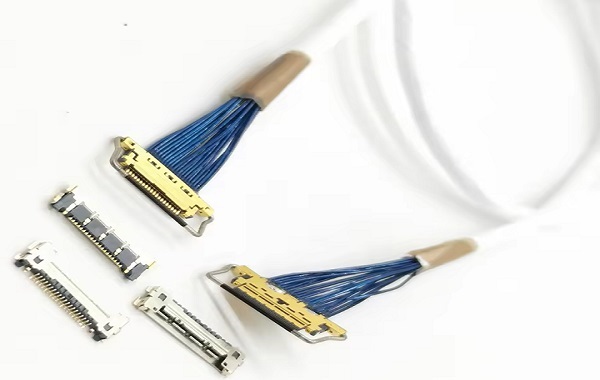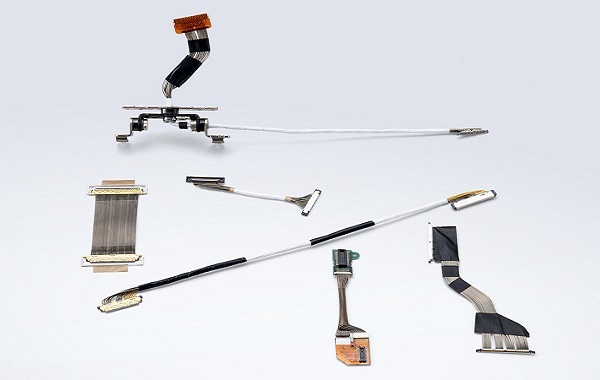Categorization:Harness Component

The insulating layer of extremely fine coaxial cables is usually only a few to a hundred micrometers thick. Although its structure is minute, every micrometer difference may affect the signal quality.
1.1 Capacitive effect: The thinner the insulating layer, the greater the capacitance per unit length of the cable bundle, which may lead to increased signal delay and more severe high-frequency loss.1.2 Mechanical flexibility: If the insulating layer is too thick, it will reduce flexibility, limiting the wiring ability of the cable harness in compact spaces.
1.3 Manufacturing tolerance: Micron-level thickness deviation may cause impedance mismatch, leading to signal reflection and transmission error.
Therefore, under extremely fine specifications, the control of the insulation layer thickness becomes the core difficulty in the manufacturing process, which requires the use of high-precision extrusion equipment and on-line detection systems to ensure consistency and stability.
In high-speed signal links, characteristic impedance (such as 50Ω single-ended or 100Ω differential) directly determines the level of signal reflection and echo loss. Poor impedance control will lead to issues such as closed eye diagrams and increased bit error rates.
Insulation thickness: It determines the medium distance between the central conductor and the shielding layer, which is the most core geometric parameter affecting impedance.
2.2 Material characteristics: Different insulating materials (FEP, PFA, LCP, polyimide, etc.) have different dielectric constants and temperature stability, which have a significant impact on impedance consistency.
2.3 Coaxial structure accuracy: Conductor eccentricity, uneven shielding layer weave density, or outer diameter deviation can all cause impedance shift.In extremely fine wire bundles, these tiny errors are infinitely magnified, therefore, precise mechanical control and full inspection methods (such as TDR testing) are required to ensure impedance stability.

Three, actual manifestation in application scenarios
3.1 High-speed display interface (eDP, MIPI DSI): Insulation thickness and impedance control directly determine the clarity of image transmission and the anti-interference ability.
3.2 Medical Probe and Imaging System: Requires high impedance stability to avoid signal distortion and imaging noise.
3.3 High-speed storage and sensing module: Impedance mismatch in high-speed channels such as PCIe, USB4 can lead to packet loss or delay.

I amSuzhou Huichengyuan Electronic Technology,Long-term focus on the design and customization of high-speed signal cable harnesses and ultra-fine coaxial cable harnesses, committed to providing stable and reliable high-speed interconnect solutions. If you have related needs or want to learn more, please contact:YinManager 18913280527 (WeChat number same)。